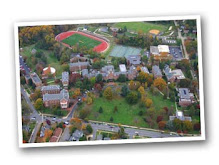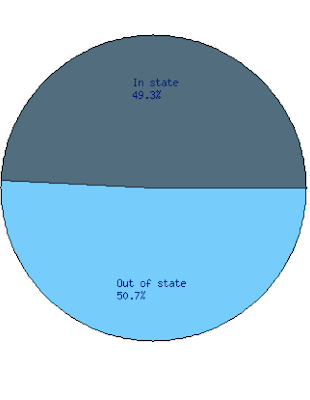"What is going on in
SMU's admissions?"
It was first question that went off like a cannon ball blast out of this alumni's mouth over the phone.
This particular father was obviously hot over the fact that his son had been deferred in early action to
SMU.
And he had reason to be upset. His son had solid, admissible academic credentials. He was captain and leader for all three team sports he played. And he was a legacy applicant.
And yet still he was deferred.
It was at that point that I tried to explain to the father that it is not what is going on
in SMU's admission office as much as it is what is
coming into SMU's admission office.
I call it the "Bucket Down Effect" in college admissions today.
Here is the illustration I use to explain my theory.

This year, for example, over 28,000 applied to
Yale. What's freakishly scary is that the majority of students applying to Ivies like
Yale are "admissible" based on academic credentials (GPA, test scores, class rank). Don't believe me, then I would encourage you to read
this interview with Maria Laskaris, Dean of Admission at
Dartmouth College.
This means that 94% of the bucket, which is filled with "Ivy admissible" kids are being dumped out, and a result, are being forced to go into the next bucket down.
As a result, the buckets just below the Ivies are now getting a
higher quality applicant, which then allows these institutions to become
more selective.
Vanderbilt illustrates this.

In just 10 years they have gone from dumping out only half of their bucket of applicants to now dumping out 86% of their buckets - and again most of these kids have "Ivy quality credentials".
Look, for example, at the ACT average for admitted students this year (33-35). That's the same median range for all the Ivies. There is literally no different in the admitted credentials; there is now only a slight difference in the admit-to-deny stats (8% and less -> Ivies; 14% and less ->
Vanderbilt's).
So as you can see again from this slide below, those being dumped out of
Vanderbilt's bucket are then logically going down into the next bucket below, which in this case is a school like
SMU.

This brings me back to what I was trying to explain to this
SMU alumni father.
SMU's early bucket was the most credential pool they have ever had.
The average ACT, for example, of admitted students in early action at
SMU was a 29.
What's happening then is that we are seeing 1) a proliferation of intellectual and scholarly capital that is making schools below the Ivies so much better, which 2) is making the quality of education (or brand) at these institutions that much better, which then 3) is making the competition for the "supply" of this new quality brand of education that much more intense.
It's very good news for the 60+ colleges and universities that are now admitting 26% and less.
And it is also good news for students getting admitted and matriculating to one of these schools, and many others.
But it is also bad news for those who a few years ago would have been admitted to the
SMU's, but now just aren't able to.
Luckily, our student was admitted into
SMU during regular admission, along with six other of his peers.
But come next year, we will see the bucket down effect in full effect once again...and the competition for a spot will be that much more intense.


















